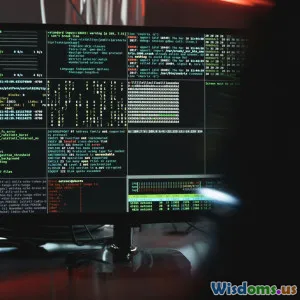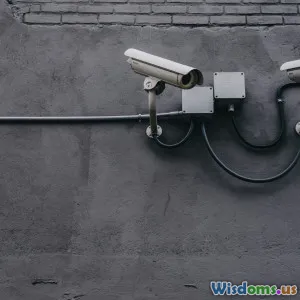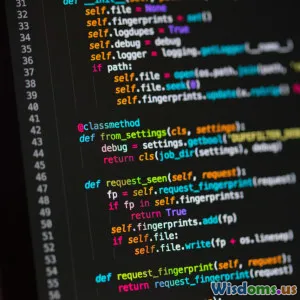
What Penetration Testers Really Find Lurking Behind Firewalls
10 min read Dive into the hidden vulnerabilities and surprising realities uncovered by penetration testers behind modern firewalls. (0 Reviews)
What Penetration Testers Really Find Lurking Behind Firewalls
Introduction
When organizations invest significant resources into deploying firewalls, they often assume their networks are sealed off from prying eyes and malicious actors. Firewalls are undoubtedly a crucial first line of defense, but experienced penetration testers—security professionals paid to think like hackers—frequently uncover unsettling realities lurking behind those layers of hardware and software. What do these experts really find when they test and probe an enterprise's firewall defenses? The findings often defy expectations, revealing a tangled web of overlooked flaws, misconfigurations, and risky assumptions that expose organizations to breaches.
This article peels back the curtain on the true state of network security behind firewalls. By examining detailed real-world examples and evidence, we'll explore the common vulnerabilities penetration testers discover and explain why these hidden gaps matter deeply for businesses and cybersecurity practitioners alike.
The Illusion of Firewall Security: A False Sense of Protection
Firewalls are designed to monitor and control inbound and outbound network traffic based on a set of rules, aiming to block unauthorized access while permitting legitimate communications. This essential function delivers substantial value, but it also creates a psychological trap known as the “firewall effect.” Organizations tend to believe that once the firewall is properly configured, they have achieved 'security.' Unfortunately, this belief often leads to complacency.
For instance:
- A 2022 survey by Cybersecurity Insiders found that over 70% of organizations believed their firewall-up defenses were sufficient to prevent breaches. Yet, according to Verizon's Data Breach Investigations Report 2023, misconfigurations related to firewall rules remain a top attack vector in nearly 40% of successful attacks.
This gap between perception and reality highlights a dangerous overreliance on firewalls as a silver bullet.
What Penetration Testers Really Find: Common Vulnerabilities Behind Firewalls
1. Misconfigured Firewall Rules
One of the most common and critical issues penetration testers encounter is misconfiguration. Firewalls rely heavily on access control lists (ACLs) and rule sets dictating which IP addresses, ports, and protocols are allowed or denied. A misplaced permit rule or outdated exception can open a wide door to attackers.
- Case in point: During a penetration test for a financial institution in 2023, testers discovered that a deprecated VPN client had unrestricted inbound access from the internet because an obsolete firewall rule granting wide IP range access was never removed after a software upgrade. This oversight allowed the testers to tunnel directly into the organization's internal network.
2. Unpatched Vulnerabilities on Internal Hosts
Firewalls primarily filter traffic at the network perimeter but rarely inspect encrypted or internal communications. Penetration testers frequently identify outdated or unpatched software—and even unsupported operating systems—running behind the firewall.
- Data example: According to Microsoft’s Security Intelligence Report, over 60% of exploited vulnerabilities in enterprise breaches occur on internally connected assets that aren’t adequately maintained.
Because internal hosts are ‘trusted’ by default, attackers gaining initial footholds can pivot laterally with relative ease if patch management is lax.
3. Over-Privileged User Accounts and Insider Threats
Firewalls cannot detect poorly managed user permissions or malicious insiders. Pen testers sometimes simulate social engineering or phishing attacks to gain credentials that allow them to pass firewall defenses legitimately.
- Notable incident: The infamous Target breach of 2013 began from compromised credentials linked to an HVAC subcontractor who had legitimate but excessive network access.
Without strong identity and access controls, firewalls merely act as checkpoints rather than absolute barriers.
4. Shadow IT and Unapproved Network Devices
Penetration testers also often stumble upon non-sanctioned devices—ranging from personal laptops to IoT gadgets—plugged into the network behind the firewall, which can serve as entry points for malware or exploitation.
- Statistic: Gartner reported that 80% of enterprises are unknowingly at risk due to shadow IT and unmanaged devices, making firewall lines moot when unauthorized endpoints reside inside the perimeter.
5. Poorly Segmented Networks
Firewalls can be configured for network segmentation, restricting access between different internal zones (e.g., user workstations, servers, databases). However, auditors often discover flat networks where devices have unrestricted communication horizontally.
- Penetration testers use techniques like lateral movement scouting and privilege escalation to exploit this lack of segmentation, turning a small compromise into widespread access within the organization.
6. Insecure VPN and Remote Access Implementations
Remote access solutions often expose enterprises beyond their physical firewalls. Penetration tests regularly reveal weak encryption, default credentials, and inadequate multifactor authentication protecting laptop or mobile device VPN connections.
- Example: Researchers demonstrated in 2022 how flawed VPN implementations allowed attackers to bypass firewall protections entirely by injecting malicious packets over supposedly secure tunnels.
Real-World Insights From Penetration Tests
Security leaders increasingly rely on penetration testing to evaluate these hidden risks. Some valuable insights include:
-
Testers uncover things automated scans miss: Unlike automated vulnerability tools that merely report known problems, human testers creatively investigate interconnected systems, business logic flaws, and social engineering vectors.
-
Complexity breeds vulnerabilities: As enterprises adopt cloud hybrid deployments, microservices, and remote workforces, their firewall rules become more complex and prone to errors.
-
Security awareness matters: Many breaches begin with human failure—phished credentials or accidental exposure—not technological shortcomings behind the firewall.
How Organizations Can Harden Defenses Behind the Firewall
1. Continuous Rule Review and Least Privilege Access
Regular audits of firewall rules eliminate obsolete or too-broad access permissions. Deploying the principle of least privilege restricts sources and destinations strictly to what business needs require.
2. Rigorous Patch and Asset Management
Employ automated patch management and asset inventory tools to track and update all internal systems. This prevents vulnerable unpatched machines from becoming pivot points.
3. Strong Identity and Access Management
Enhance authentication frameworks with multifactor authentication, role-based access controls, and continuous monitoring for unusual account activity.
4. Network Segmentation and Microsegmentation
Segment the network logically and physically to quarantine critical assets such as databases and servers. Software-defined networking (SDN) can enforce fine-grained microsegmentation policies.
5. Manage Shadow IT and Endpoints
Implement robust endpoint detection and response (EDR) platforms and asset discovery tools to detect rogue devices and enforce security policies.
6. Secure Remote Access
Use zero-trust network access (ZTNA) solutions that authenticate each session individually rather than traditional perimeter-based VPNs.
Conclusion
Behind firewalls lies a complex reality frequently more vulnerable than many organizations realize. Penetration testers expose that the true risks do not merely come through perimeter attacks but from misconfigurations, insider threats, neglected patches, and inherent assumptions of trust inside the network. Recognizing these realities inspires a shift—from relying solely on perimeter defenses to adopting a comprehensive, layered approach emphasizing continuous assessment, least privilege, and zero trust principles.
Organizations that heed these lessons—investing in skilled testing, automated tools, effective user training, and vigilant policy management—can transform their firewall from an illusion of safety into a robust component of a modern cybersecurity ecosystem. The challenge is significant, but the stakes are no less than protecting vital business assets in an increasingly connected digital landscape.
Further Reading:
- Verizon Data Breach Investigations Report 2023: https://www.verizon.com/business/resources/reports/dbir/
- Gartner Report on Shadow IT: https://www.gartner.com/en/documents/3982066
- Microsoft Security Intelligence: https://www.microsoft.com/security/blog/
By understanding the unvarnished findings of penetration testers, you empower yourself to truly secure what lies behind your firewalls—and safeguard your digital future.
Rate the Post
User Reviews
Popular Posts



















